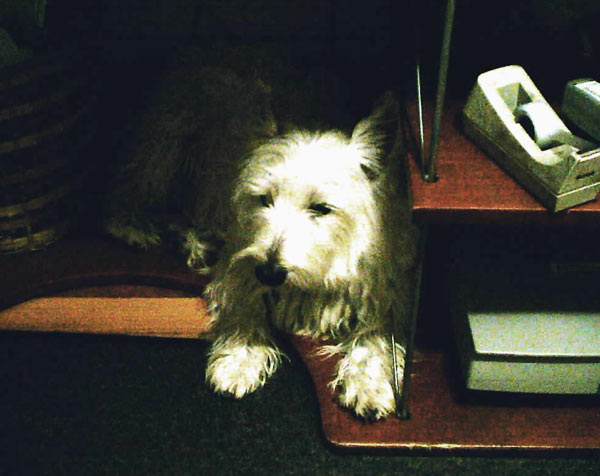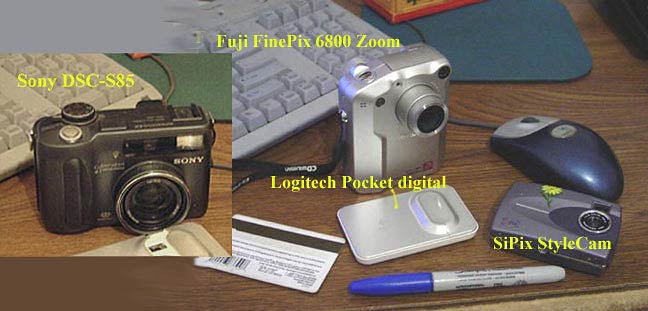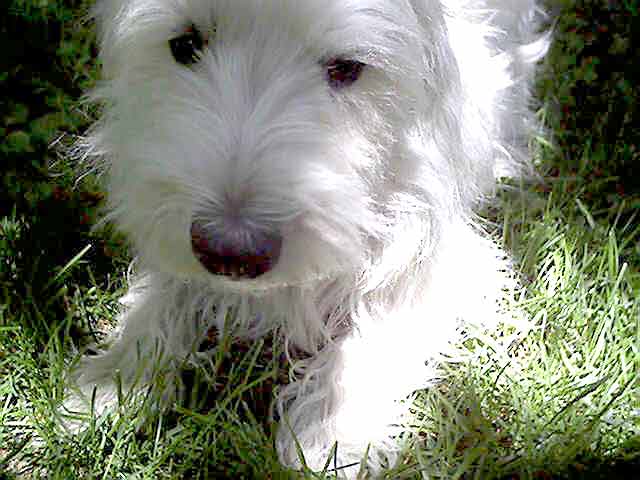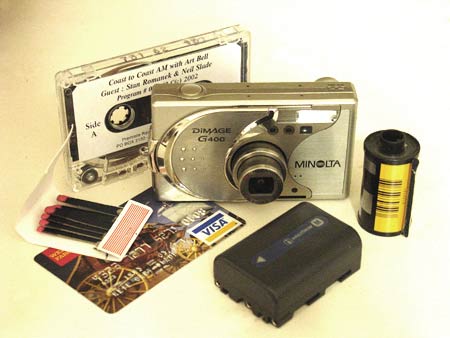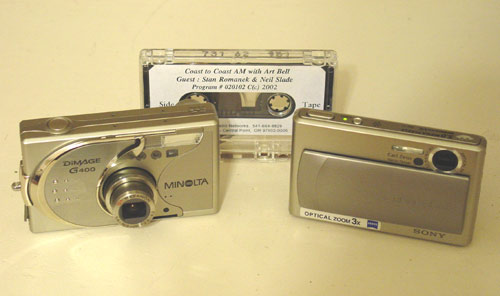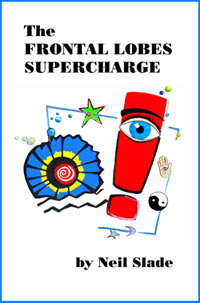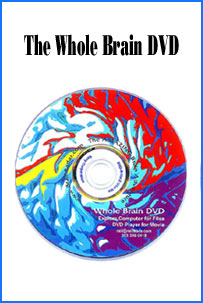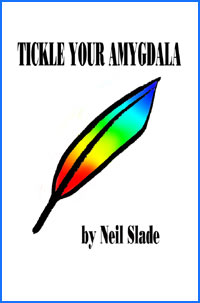Digital Photography Information, Tips, Recommendations,
Reviews, Printer, Battery, Memory Card Info
Updated April 20, 2005
This is PAGE ONE
Sponsored by
 The Amazing Brain Adventure
The Amazing Brain Adventure
"To take GREAT Photos you must KNOW HOW TO TURN ON YOUR CREATIVE BRAIN"
(Professional Brain Video do-it-yourself projects list at the bottom of this page) Also of interest to photo brains: InkJet Stuff- Amazing Printer and Ink Info Digital photography has come a long way in just the past couple of years. As of July 2004, one can buy a digital camera for $100 and print at home on a $75 inkjet printer, and rival the prints you would get with a point and shoot camera, regular film, and commercial photo lab. No film cost and excellent photo paper at 20 cents for an 8 1/2 X 11 inch sheet (Epson Glossy Paper at discount). And in fact- You can look at all your photos on the computer and you don't even have to use a printer. No film again, ever. No processing again, ever. Just bring 'em up on your PC or Mac. For a little more money- say, $399 for a camera and $175 for a printer, you can produce photos that are indistinguishable from a professional SLR Nikon and a pro color-lab. And everywhere in-between. And even better for full fledged pros. The advantage is that digital photography is less expensive in the long run (and short term too), better for the environment (email and web photos, and less chemicals down the drain), and offers quicker and more extensive editing of photos-- and you can easily do this yourself on your home computer. No more driving, drop off, paying, and pickup at MotoPhoto. And, even if you're too lazy to print out at home, the same people at MotoPhoto can STILL print out your digital photos for you.
Above: Photo with super subminiature 1.3 megapixel JVC GC50, no flash, nighttime room light-
(These days, 1.3 MP is considered
"low resolution", and thought you all might like this
one taken with a $75 camera, processed in $50 Photoshop Elements
slightly, to resemble a Vermeer type oil. Used just the "despeckle"
filter to soften grain, and desaturated the color, and that's about
it.
I've found that
"cheapness" and lack of detail often works to one's
advantage-- the "perfect" photo often has considerable
"flaws"- just like good paintings.)
For people who are serious, digital photo software allows you unbelievable control over your images in ways that are not even possible in the chemical lab. My photo's have regularly appeared in Denver Newspapers, and I began processing my own darkroom photos at the age of 14. Although regular film photography has it's charms, there is no way I will be returning to the darkroom-- and I greatly prefer both the ease, and flexibility and better results of digital photography. Photography is a lot of fun and GOOD for your brain. Taking, developing, manipulating and editing pictures simulates many parts of your brain motor- right brain, occipitals, and creative circuits. As you play with enjoying and sharing your pictures your brain will grow in its powers of observation as well as artistic creativity. It is non-competitive expression and can elevate our human experience.
Digital Cameras from a couple of years ago:
SAMPLE PHOTOS
See Sony sample web photos by your's truly at: and throughout www.NeilSlade.com The Amazing Brain Adventure
The quality of digital photographs absolutely rivals the best film photography nowadays, and many professionals have made the switch. Photos seen on the web (such as on this page) are normally compressed to aid speedy download and are not necessarily representative of the high quality available from some exceptional cameras, and seen in printed photos, or viewed from saved images on a hard drive or photo CD. Camera models have evolved somewhat and changed over the past couple of years, so there's some new news..........
MEGAPIXEL DILEMMA
Cool close-up Erfie photo above taken with a $50 one half megapixel plastic camera...! Is more really better? Absolutely NOT. For most consumers and people needing a point and shoot snapshot camera, every major brand digital camera of 2 megapixels (amount of picture resolution detail) and above will take good pictures. It's that simple. You just decide on the size, and the bells and whistles you think you want or need. Olympus now sells a compact 3 megapixel camera for $149 (and prices keep coming down) that would work great for the majority of snapshot takers out there. There are even less expensive 1.3 - 2 megapixel digital cameras that will work fine for many people. I have a 4 megapixel camera capable of incredible detail- and I use the 1.9 MP setting 99% of the time. And for EVERY web and email photo. There you go. But my camera (Sony DSC-S85) has a big lens- it's a quality 2 megapixels. More pixels means you can crop and blow up sections of a photo and keep image quality up, but frankly, this almost never occurs to the extent that would require these high resolutions. As you increase pixels, you increase the amount of memory you use on your camera's memory card- (this is what the camera stores images on instead of film). You can by more or bigger memory cards, and lose them, or you can just use what you really need for your photos. Web/email photos don't need to have fine fine resolution- because all computer monitors are not that fine to begin with- you can have the finest resolution in the world for your photo, and it won't make any difference if you post it on the web or email. Any resolution above 2.5 megapixels is really only for extreme cropping of photos, or large full 8X10 photos of extreme detail. Otherwise, don't waste your card memory and use the lower resolutions 2-3 megapixels. These cameras with 5 to 8 megapixels-- for most home use, this is absolutely overkill, and a way to fool people into buying new cameras. It's a different story for news journalists, and actual money making pros who can use finer resolution. It's like this: Do you need a 450 horsepower engine to drive to 7-11? I didn't think so.... ANOTHER factor, however, is that cameras with teeny lenses- on very compact cameras- lose quality and detail-- there's just not enough GLASS in front of the image sensor. You know, pictures are all about LIGHT-- and the bigger WINDOW (your lens) you have, the better your picture. So the way camera makers get around the loss of detail with small lenses, is they add a bigger sensor CCD chip-- more megapixels. You get some detail back. This works KIND OF. The problem is, there is almost NO SUBSTITUTE for a good big lens, although I've seen a couple of exceptions- in the Minolta G400 and the Sony T1. More below on these...ALSO, more megapixels mean you can fit fewer pictures on your memory card. You'll need to buy bigger cards, carry more cards (lose? more cards). You can't have your cake an eat it too. You want the very best picture? You need a decent lens on the front of your camera. Of course, this is more important to people who are hobbyists rather than snapshot takers, for which this is less of an issue. FINALLY- often, MORE megapixels may force other parts of a camera's electronics to compromise other aspects of quality. A good example is the Canon G5-- which has more megapixels than the G3, and in some respects produces images of WORSE QUALITY. My 4 MP Minolta takes BETTER, more detailed, and sharper images than many 6 MP cameras manufactured out there- and better than EVERY 5 MP camera under $500 made this year. Do not buy or upgrade your camera, just to get more megapixels. Careful.
The Amazing Brain Adventure"To take GREAT Photos you must KNOW HOW TO TURN ON YOUR CREATIVE BRAIN"
RECOMMENDATIONS FOR CAMERAS Here's an email reply I recently send to someone wanting to understand pixels and recommended cameras:
I've posted considerable OLDER detailed information on digital cameras on the
Your Great Brain Adventure group messages, at I've been a photographer, including at the professional level, all of my life- so the information is accurate and useful(!).
BATTERIES and MEMORY CARDS The retail store (especially) and other sources markup on camera batteries and memory cards is obscene. Over the years I've learned where to go for these items at fair prices from reliable and dependable sources.
For memory cards, (and also computer memory and hard drives) its hard to beat Provantage at
For batteries, just go on Ebay and buy from an online dealer with good ratings of 97% or better. Shop a few and then pick the best looking one. You'll pay a fraction of the battery cost, and get the same exact battery you would pay the name dealers 4 times more for. Lithium Ion, is lithium ion. Check the milliamp hours. I've bought many batteries from Eagle Importers at Ebay which were absolutely an outstanding bargain and perfect quality.
BUYING YOUR CAMERA
Again, these days it's hard to buy a bad digital camera. But if you are sensitive to the more subtle nuances of use and quality- then it helps to go to the right place for the most efficient and satisfying use of your green energy:
1) CAMERA STORES In terms of buying a camera- nothing beats walking into a camera store and talking with a knowledgeable HUMAN, who will support your purchase. You may pay a little more, perhaps, but if you need guidance, talking with a person is really nice, especially if you know little about photography. Support your local dedicated camera people, eh? This is called Brain Cooperative Intelligence. The camera stores in my town are kept in business by people who give their customers a reason for coming back.
2) DISCOUNT APPLIANCE and COMPUTER STORES If you need little or no information (if you are EXPERIENCED or have been given reliable GUIDANCE), or if you want potentially bad information, go to the appliance, office, or computer stores. You'll save a little money. Some of these people are knowledgeable, others think they know something- but don't. If YOU know nothing, how will you tell the difference? Many stores have teenagers (god bless 'em) that get exactly 30 minutes of training before they are put on the sales floor. I frequent places like Comp USA, Best Buy, and Circuit City often- but I already know what I want, and have years of experience with the kind of equipment I'm getting there. So, if you go into those places, do your homework FIRST. If you need help and advice with your camera and photography- where are you going to end up for reliable advice? See 1) above.
3) INTERNET MERCHANTS Lastly, if you have done your homework, there are a few reliable and trustworthy web dealers. Generally, the best prices are found on the web. It's not a great deal of savings over the discount retail merchants, and in many cases, no savings at all. But, on the higher priced equipment, and professional equipment, there is more room for price differences, and great savings can be found from the dealers shown below. BUT BEWARE!!! There are some REALLY REALLY bad web merchants also. Some of the places with the lowest prices in the universe have horrible reputations, and you will regret sending your money to "Pete's Lowest Camera Price Universe". You may get a bad item, you may wait forever, or you might not even get it at all. And realize, web merchants will rarely if ever help you understand what you buy from them. One reliable source (there are indeed many) for equipment is Worldwide Direct, a low priced mail order/web source for digital cameras and camcorders. (This is NOT a paid endorsement, I've used them several times myself). Your local camera store is excellent for personal attention and support, though prices will be higher than mail order. Better prices than B&H below, though not quite as universal stock- pretty damn big however. Probably the best reliable prices on the web for new cameras- excepting accessories. See below for memory and batteries. Another favorite of professionals (as well as regular consumers) is B&H Photo http://www.bhphotovideo.com and has a huge inventory and selection. Between B&H and Worldwide Direct, you should be able to get anything you want on the web, at the best prices. These are the best to be found on the web.
Professional Video Camera and Equipment Do-It-Yourself Genius Projects: DVX100 .3X DIY Semi-Fisheye Lens Project $40 GL2 .5X GL2 Super Wide Angle DIY Lens Project Better and Cheaper Mike Boom Pole EXTENDED Super Camera Jib/Crane Modification Better Almost Free Flip-Out LCD Lens SHADE for Camcorders and DVX100 English and Scottish Windpals (wind noise protection)
Back to The
Library From Another Dimension
and HOME
The AMAZING
BRAIN ADVENTURE's MOST POPULAR PAGES:
Your Amazing Brain Adventure
is a web site all about Tickling Your Amygdala-
i.e. turning on the best part of your brain as easy as clicking on a light
switch. This is done as easily as imagining a feather inside of your head
stimulating a compass, the amygdala. The amygdala is a set of twin organs, a
part of your brain that sits right in between the most advance part of your
brain- the frontal lobes and pre-frontal cortex- and the most primitive part
of your brain- your "reptile brain" and brain stem. By tickling your
amygdala you instantly and directly increase creativity, intelligence,
pleasure, and also make possible a spontaneous natural processes known as
"paranormal abilities", although such things as telepathy and ESP are really
as natural as breathing, or as easy doing simple math in your head. The
ability to self stimulate the amygdala by something as simple as thought has
been proven in laboratory experiments, such as those conducted at Harvard
University research labs, 1999-2009, and can be tracked with modern brain
scanning machines such as fMRI and PET... Indeed, thought is faster than
light.
Other sites of interest:
EasyPaintYourCar.com
is a painting site dedicated
to learning how to paint a car yourself, even if you've never painted a car
before. You can refinish your car to professional standards at home, better
than if you take it to someone else, and enjoy doing it at a fraction of the
cost of having it done in an expensive shop. You can repair dents, rust, and
use the most durable real automotive paint, and even learn to apply it
without any special or expensive gear, in a safe and enjoyable manner. Paint
your car in your garage, car port, or even driveway. You can spray, use an
HVLP gun, or even use a roller.
Easy Make A Kindle
and
Your
Own Publishing
are sites about self-publishing and writing, and how any person can publish
materials, print, online, and electronic books. You can drop out of the
corporate slave labor rat race and own your own life by writing and
distributing your own books on the subject that you know best.
InkJetHelper.com
is a web site about escaping from
the ridiculous cost of ink jet printer ink refilling- and refilling your
printer for pennies instead of $70 a shot. It also has useful tips about
maintaining ink jet printers, especially Canon brand printers.
Julia Lu
Painting
is
all about the creative works of Chinese painter Julia Lu, a modern master of
oil and water color painting. Julia shares her creative secrets, ideas, as
well as her art work.
Off-site links
Neil on Lulu
Car On Lulu
Tribe
Blogger
Wordpress
Cookbook
Space
PaintWordpress
Tripod
2
Google Wands
Amazon
B&N
Kindle
Facebook
Linked
GooglePlus
Coast2Coast
Viewzone
YouTube
2
Blogtalk
1
2
3
4
5
6
7
8
9
1
2
3
4
5
6
7
8
9
1
2
3
4
5
6
7
8
9
1
2
3
4
5
6
7
8
9
a
b
c
d
e
f
a
b
c
e
f
g
h
i
8
7
6
5
4
3
1
2
a
b
c
d
e
f
g
h
i
a
b
c
d
e
f
g
h
i
j
k
l
m
n
o
p
q
r
s
r
u
v
w
x
y
|
